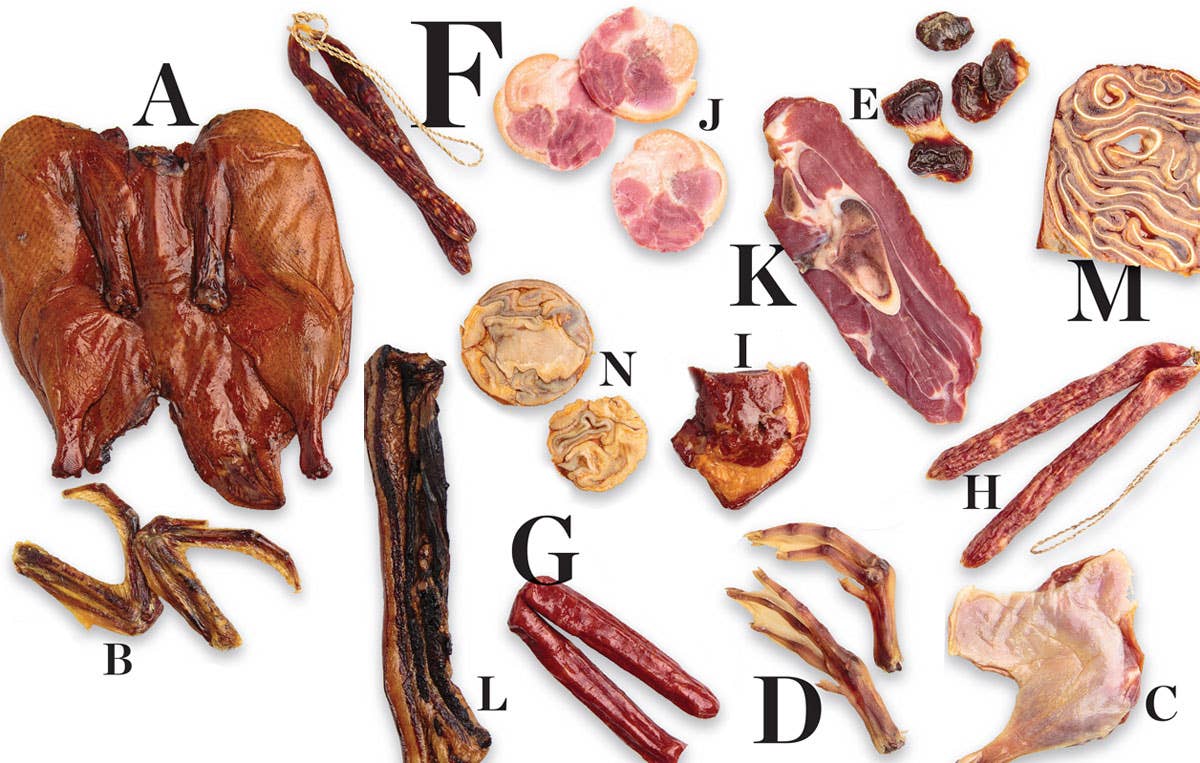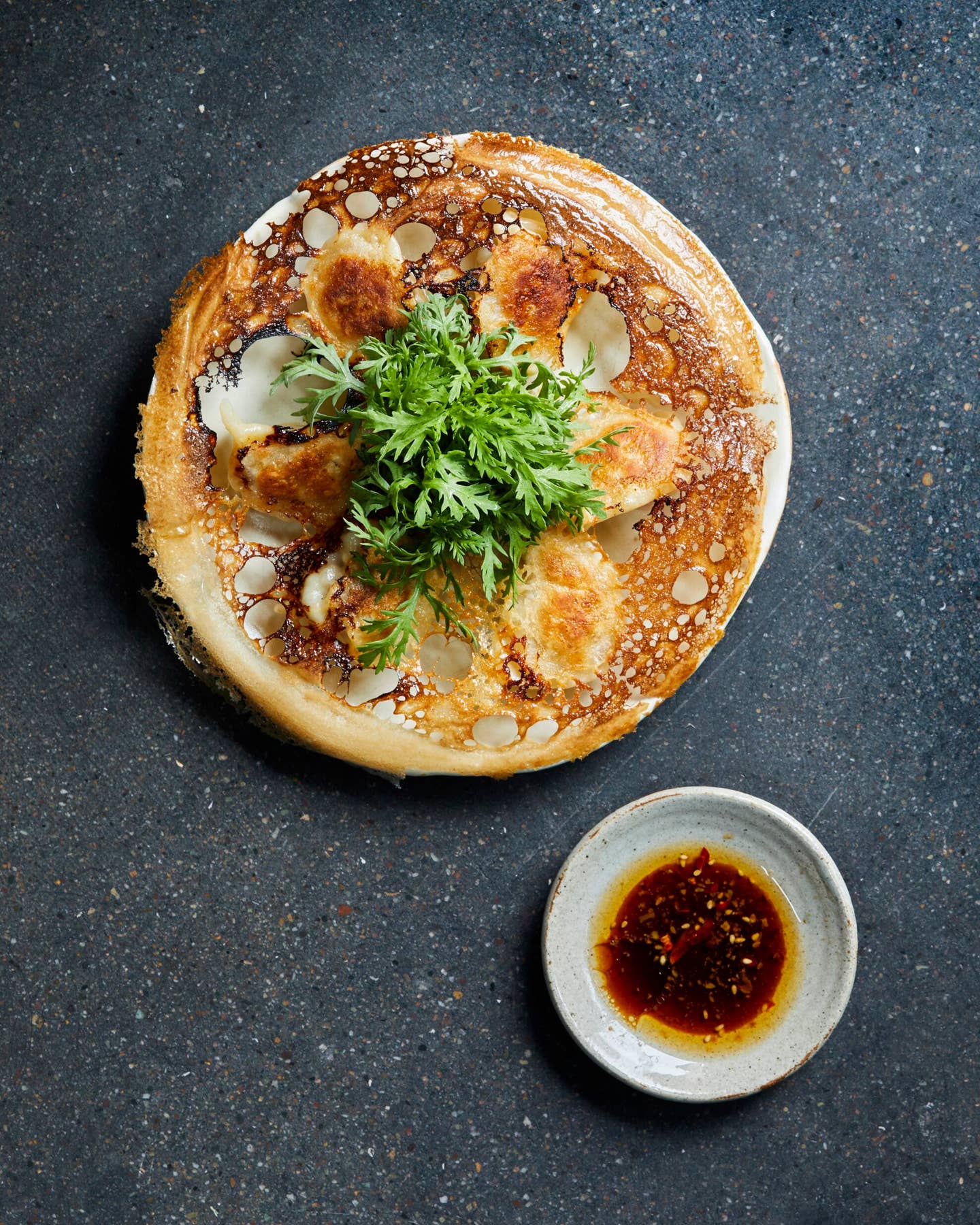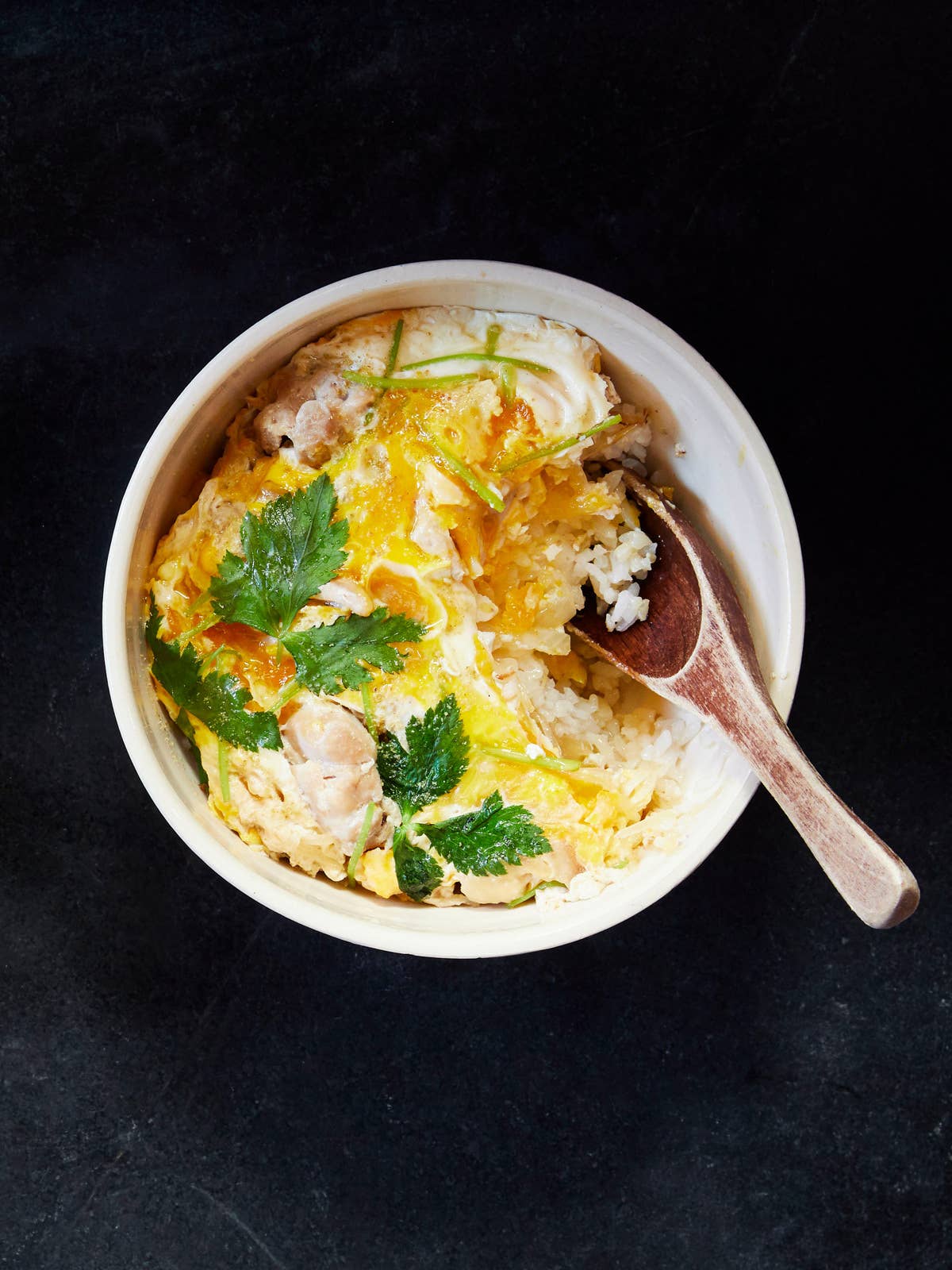
Chinese Charcuterie
Whenever I visit a Chinese grocery store, I head straight for the charcuterie case. Almost always, I pick up a whole smoked duck (A) to take home, slicing the breast to enjoy cold, then shredding the leg meat into stir-fries. Duck also comes salt-cured, and preserved duck wings (B), legs (C), and feet (D) are among my favorite comfort foods, especially when they're steamed with rice. (As they cook, the duck parts infuse the grains with rich, meaty flavor.) I also pick up springy, salted gizzards (E), a wonderful addition to stews. Another great example of Chinese charcuterie is la chang, dried pork sausages. These cured meat masterpieces have been made for thousands of years and, when sliced and steamed, have an addictive chewy texture. Darker links are fortified with duck (F) or pork liver (G), while pink, fat-flecked versions are seasoned with rose water and soy sauce (H). Pork takes on other flavorful forms—from pork hock, available whole (I) or thinly sliced (J), to Yunnan-style salt-cured hams (K). Similar to American country hams, with their deep red color and buttery texture, they're ideal for mincing into hearty soups. Dry-cured Chinese bacon, lop yuk (L) brings a dense, smoky richness to braises and stir fries. And I never pass up ready-to-eat delicacies, like crunchy braised pigs' ears (M), which I like to slice thin and dress with chile oil, sesame seeds, and cilantro; and soy-braised pig stomach, which comes spiced with cloves and other aromatics (N). It makes for a great garnish, and a great meal when served over rice.
Lillian Chou is a writer based in Beijing.
Keep Reading
Continue to Next Story










